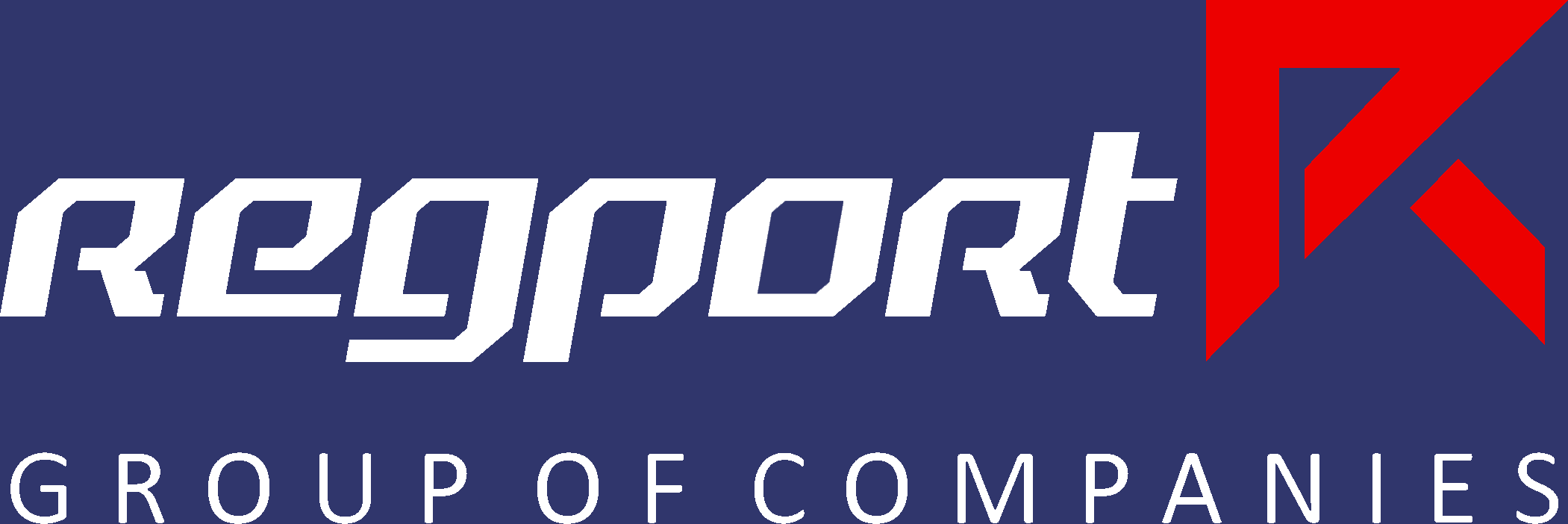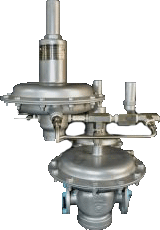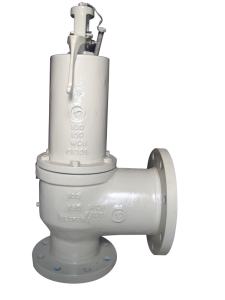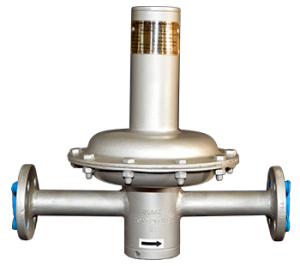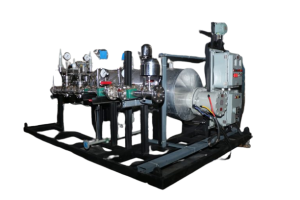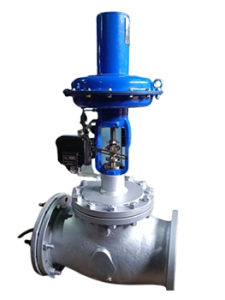Pilot Operated PSV
R020 Series Pilot Operated Safety Relief Valves
A Safety Relief Valve, in which the major relieving device or main valve is combined with and controlled by a self actuated auxiliary pressure relief valve (pilot) is called Pilot Operated Safety Relief Valve.
A pilot operated pressure relief valve consists of the main valve, which normally encloses a floating unbalanced piston assembly and external pilot.
The piston designed to have a larger area on the top than on the bottom. Up to set pressure, the top and bottom areas are exposed to the same inlet operating pressure. Because of the larger area on the top of the piston, the force holds the piston tightly against the main valve nozzle. As the operating pressure increases, the net seating force increases and tends to make the valve tighter. This feature allows most pilot operated valves to be used where the maximum expected operating pressure is higher than percentage.
At the set pressure, the pilot vents the pressure from the top of the piston; the resulting net force is now upward causing the piston to lift, the process flow is established through the main valve. After the overpressure incident, the pilot will close the vent from the top of the piston, thereby re-established pressure, and the net force will cause the piston to reseat.
A disc, which normally closes the main valve inlet, is integral with a flexible diaphragm. The external pilot serves the same function to sense process pressure, vent the top of the diaphragm at set pressure, and reload the diaphragm once the process pressure is reduced.
The lift of the main valve piston or diaphragm, unlike a conventional or balanced spring loaded valve, is not affected by built up back pressure. This allows for even higher pressures in the relief discharge manifolds.
The pilot operates the main valve can be either a pop-action or modulating-action pilot. The pop-action pilot causes the main valve lift fully at the set pressure without overpressure. The modulating pilot opens the main valve enough to satisfy the required relieving capacity.
The pilots may be either flowing type or non flowing type. The flowing type allows process fluid to continuously flow through the pilot when main valve is opens; the non flowing type does not. The non flowing pilot-type is generally recommended for most services to reduce the possibility of the hydrate formation or solid in the lading fluid affecting the pilot’s performance. Pilot operated pressure relief valves are available for use in liquid and vapor services. Operating characteristics of some pilot operated valves are unaffected by the state of fluid and these types are recommended for two-phase flow application.
For pilot-operated PSVs, the valve lift is not affected by backpressure. For compressible fluids at critical flow conditions, a backpressure correction factor of 1.0 should be used for pilot-operated PSVs.
For a pilot-operated PSV, neither the set pressure nor the capacity is typically affected by backpressure, for compressible fluids at critical flow conditions.
The capacity of these balanced valves begins to decrease when the back pressure exceeds 30 % to 50 % of the set pressure due to subsonic flow and/or physical responses to the high back pressure.
Backflow preventer is required when the possibility exists of developing a pressure on the discharge side of the valve that exceeds the inlet pressure of the valve. The higher discharge pressure can cause sufficient upward force on the diaphragm or piston to open valve and cause flow reversal. The backflow preventer allows the discharge pressure to provide a net downward force on the diaphragm or piston to keep the valve closed. The proper operation of the backflow preventer is critical to further insuring no flow reversal occurs in the valve.
Types
Pop-action Pilot-operated Valve (Flowing-type)
Pop-action Pilot-operated Valve (Non-flowing-type)
Modulating Pilot-operated Valve (Flowing-type)
Pilot-operated Relief Valve with a Non-flowing Modulating Pilot Valve
Low-pressure Pilot-operated Valve (Diaphragm-type)
Pilot Operated PSVs should be considered if the superimposed backpressure is variable and higher than 10% of set pressure and or where the built up back pressure is too high for conventional and bellow type pressure relief valves.
Pilot operated relief valve may also used when back pressure exceeds 40 – 55% of set pressure.
Pilot operated relief valves shall also be chosen when the maximum operating pressure less than 10% below the design pressure / set pressure or if the required orifice for single valve installation exceed the maximum size (8*T*10) of API 526 or where set pressure is closer than 10% of operating pressure, in general.
Pilot operated Relief valve may also be used when pressure loss from equipment protected to valve is more than 3 % of proposed set pressure
Pilot operated Relief valves may also be considered for systems requiring automatic depressurizing in addition to overpressure protection and for short blow down without increasing simmer range.
Pilot operated valve shall only be used if no alternative is available, but in any case these shall not be used on waxy crude duty.
Pilot-operated PSVs have pilots that are vented to atmosphere or are balanced to maintain set pressure in the presence of variable superimposed backpressure.
